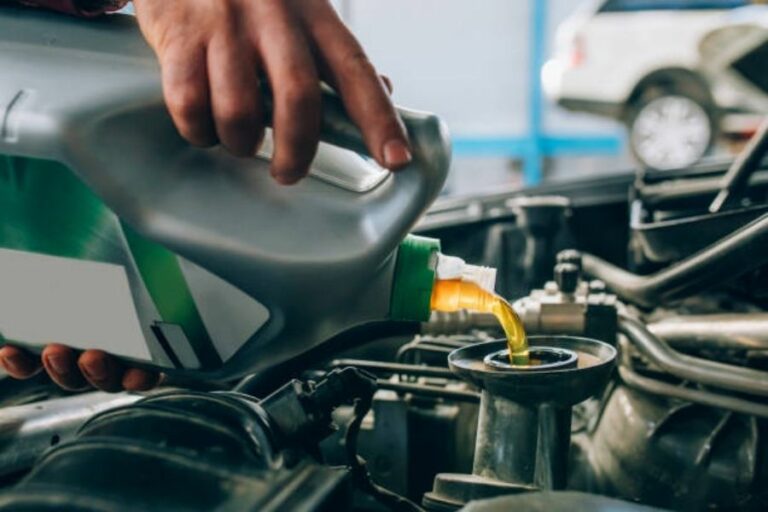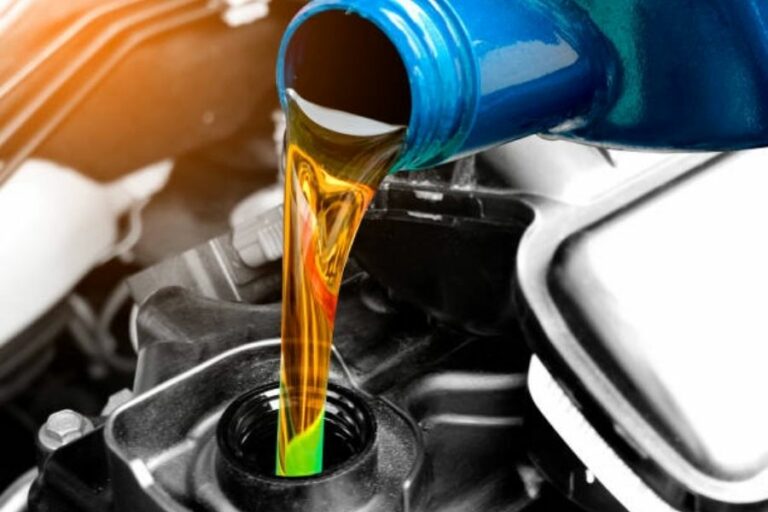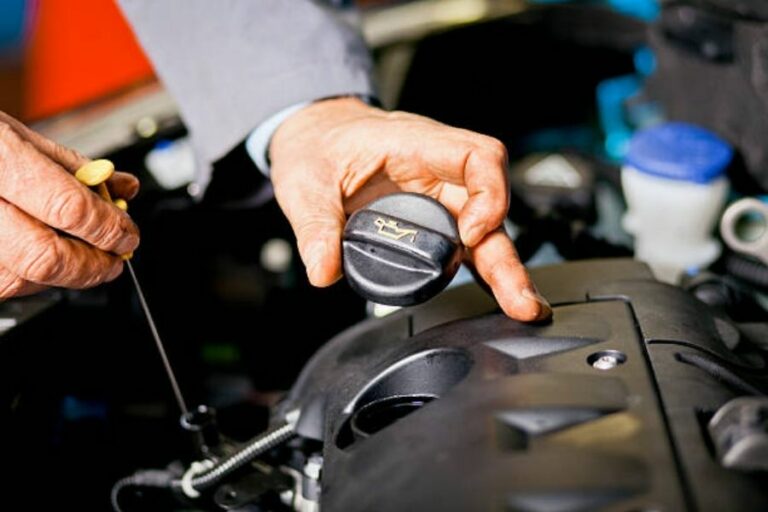How To Remove Brake Line From Caliper Without Losing Fluid (Most Easiest Way)
For several reasons, you may need to remove a brake line from the caliper. Unfortunately, removing the brake line typically results in fluid loss, which can lead to air entering the system and causing braking failure.
But, following some procedures, you can successfully do it without losing too much brake fluid. This process, as well as several other significant considerations, will be covered in detail throughout this article. So, continue reading to learn more.
How Do I Know If My Brake Line Is Damaged and Needs to Be Replaced?
The brake lines are a vital part of the braking system. These lines enable a car to reach a smooth and secure halt by transporting braking fluid from the cylinder to the brake calipers.
Unfortunately, brake lines can deteriorate with time, endangering the security and dependability of your brakes. Here’s how to detect whether the brake lines are damaged or need to be replaced.
Symptoms 1: Leaking Brake Fluid
The most typical sign of a failed brake system is leaking brake fluid. While typically built of steel and strong enough to handle high pressures, brake lines still deteriorate over time.
Your car may leak brake fluid if you see a clear or faintly yellowish liquid coming from it.
Symptoms 2: Malfunctioning Brakes
Another and perhaps more deadly sign of a bad brake line in a car is malfunctioning brakes. If one or more brake lines fail, the brakes won’t be able to function, and the vehicle won’t have any braking pressure.
Symptoms 3: Spongy or Soft Brake Pedal
If the brake pedal feels spongy or soft and does not respond as it should, it may be a sign that the brake lines are damaged or that there is too much air in the braking system.
Symptoms 4: Brake Warning Light On
The braking warning light will come on whenever the brake pad sensor detects any damage or the liquid pressure falls below a predetermined level. This is a severe indication of failure; if you notice it, you must act immediately.
Symptoms 5: Rust on the Brake Lines
The presence of corrosion or rust on the brake lines will indicate that they are fragile and in danger of leaking or experiencing other harm.
Symptoms 6: Calipers Are Sticking
Broken brake lines might prevent the caliper from operating properly or cause it to become stuck in one position. If you hear any screeching sounds coming from the brakes, it’s highly probable that either the brake line or the caliper itself has an issue.
Read Also: How To Get Air Out Of Brake Lines Without Bleeding?
How to Remove Brake Line From Caliper Without Losing Fluid?
It is quite difficult to remove the brake line from the caliper without losing fluid. The majority of people seem to be stating this is “impossible” all over the internet.
But, they are wrong since you can significantly prevent fluid loss, by applying a few strategies. Using these strategies could come in handy in a life-or-death situation.
So, without further delay, let’s jump into the procedure you were eagerly awaiting.
You must first complete certain preliminary activities before this process can begin. To begin with, ensure that the brake reservoir cover is tightly on. By doing this, the fluid loss will be reduced.
Besides, to complete this process, you will need some additional components. They are
- A wrench (12mm and 14mm).
- A clean container (in case it leaks some fluid).
- A piece of clear polythene and a rubber band/plastic or rubber cap (if your brake line is made of metal).
- A jack (to pull the car up).
- Brake hose/line clamp.
- Some additional fluid (this will be required if you accidentally lose some fluid).
Now, carefully follow the below-mentioned steps.
Step 1: Locate the brake line
At first, using a jack, lift up your vehicle to an appropriate level. Now, remove the wheel bolts and take out the wheel. Here, you will get access to the caliper, where you will notice one or two metal/plastic pipes are joined. These are the brake lines.
Step 2: Setup the brake line clamp
Now you have to remove the brake line. But, to stop brake fluid from spilling out while you’re removing it, utilize a brake line clamp. Here, try to get it as near the caliper as you can. This will block the fluid from coming out.
Step 3: Disconnect the brake line
After completing step 2, remove the brake line from the caliper. Here, use a 12 and 14-mm wrench to loosen the bolts. After removing the bolts, you may need to apply some force but be cautious not to break the fitting or the brake line.
Attention:
If you have a brake line made of metal, you can’t follow step no. 4
Step 4: (for metal brake lines) Seal the brake line’s open part.
For metal brake lines, after removing them from the caliper, you have to close the open pipe with your thumb instantly. After that, you must carefully seal the open section with polythene and a rubber band.
You can also use a plastic or rubber cap to do it. Interestingly, some also use their wine bottle corks here.
They just cut the cork according to the shape of the brake line and inserted it to seal. It also works perfectly.
To know how to do it, take help from this video:
Step 5: Collect the brake fluid
If you properly follow the above instructions, you will experience very minimal brake fluid loss.
This is normal, but if the clamp becomes loose or fails to stop the fluid pressure effectively, you will experience significant fluid loss. Here, you have to use a container to collect the fluid.
Step 6: Reconnect the brake lines
Once you have completed your caliper, repair, replacement, or other maintenance processes, it’s time to reconnect the brake lines.
To do this, remove the clamp/polythene/cap/cork from the brake lines open part and instantly connect it with the caliper.
You have to do this work quickly because, if you delay, a significant amount of fluid will come out. After that, tighten the bolts.
Step 7: Bleed the brakes
You must bleed the brakes after installing the replacement caliper or brake line. The procedure of bleeding the brakes means removing air bubbles from the braking system because air may make the brake pedal spongy or unresponsive.
Bleeding the brakes is complicated, and you will need someone’s help. Here, we tried to describe the whole process as simply as possible.
First, ensure the brake fluid reservoir is filled to the recommended level. Now locate the bleeding valve in the brake caliper. This valve looks like a small bolt with a hole in the center.
After that, connect a transparent hose to the bleeder valve, then place the hose’s other end in a bottle or container. Make sure the hose is submerged in brake fluid.
Next, open the valve with a wrench and tell your helper to pump the brake pedal. Here, you will notice some air-mixed fluid coming from the caliper.
Now, close the valve and tell your friend to depress the brake pedal. You have to continue this process several times.
This will cycle the fluid throughout the system and ensure no air bubbles inside the system.
Read Also: Can You Use Transmission Fluid For Brake Fluid? (Avoid Risk)
How Much Does It Cost to Remove Brake Line From Caliper Without Losing Fluid?
Generally, if you do it yourself, it won’t cost you any money. But, for the accessories needed for this operation, you would have to pay anywhere from $5 to $8.
And, if you take your car to a professional technician, you may have to pay between $150 and $200. But, this cost is not set. Depending on your vehicle model, and location, this cost might increase or decrease.
Can I Perform This Process on My Own, or Should I Take Experts Help?
While it is technically possible to do it yourself, it requires a solid understanding of braking systems and specific equipment.
If you are unsure about your capacity to do the task correctly, it is preferable to seek the assistance of a professional technician.
Even if you are skilled enough, you might require assistance from someone to pump the brake pedal while bleeding the brake line.
Though you may complete this independently, having additional assistance might simplify your work.
A Table Data of Some Most Popular Car Models with Their Brake Disc Diameter and Brake Fluid Type
Here’s a list of several popular automobile models and their brake disc diameter, thickness, and brake fluid type. Please keep in mind that this information may change based on the vehicle’s year, make, and trim level.
| Vehicle Model | Brake Disc Diameter | Thickness | Brake Fluid Type |
| BMW X3 | 325mm | 25mm | DOT 4 |
| BMW X6 | 385mm | 24mm | DOT 4 |
| BMW Series 2 | 290mm | 25mm | DOT 4 |
| Jeep Wrangler | 332mm | 28mm | DOT 3 |
| Jeep Grand Cherokee | 350mm | 32mm | DOT 3 |
| Audi A4 | 288mm | 25mm | DOT 4 |
| Mercedes C-Class | 318mm | 30mm | DOT 4 |
| Ford Mustang | 287mm | 34mm | DOT 4 |
| Chevrolet Camaro | 380mm | 28mm | DOT 3 |
| Honda Civic | 262mm | 21mm | DOT 3 |
Read Also: Does Brake Fluid Leak When Car Is Off? (Explained)
FAQs.
Even after reading this article, you may still have some questions. We tried our best to respond to the most commonly requested questions. Read this FAQ to find the answers you may need.
How long does it take to remove the brake line from the caliper without losing fluid?
Removing a brake line from a caliper without losing fluid typically takes less than 20 minutes. But, based on your experience and the difficulty of the issue, this time range might increase or decrease a little bit.
What type of brake fluid should I use in my vehicle?
To find out what type of brake fluid is suggested for your car, see the owner’s handbook. Most cars utilize DOT 3 or DOT 4, with certain high-performance vehicles requiring DOT 5.1 or other specialized braking fluids.
How often should I replace my brake fluid?
Generally speaking, brake fluid should be replaced every 1-2 years, depending on vehicle mileage. However, consult the owner’s manual or talk with a specialist to find out the precise recommended fluid change interval for your car.
Conclusion
Finally, in addition to learning how to remove a brake line without losing fluid, you must also be aware of your vehicle’s total braking system.
Because brake hoses can be damaged by corrosion, wear and tear, severe temperatures, or unintentional harm from road debris.
To avoid it, drive carefully and examine the brake lines for damage symptoms regularly. You can also seek an expert’s help to verify they are in excellent shape and working properly.
Read Also: Do You Have To Take Off Brake Fluid Cap When Changing Brake Pads?






